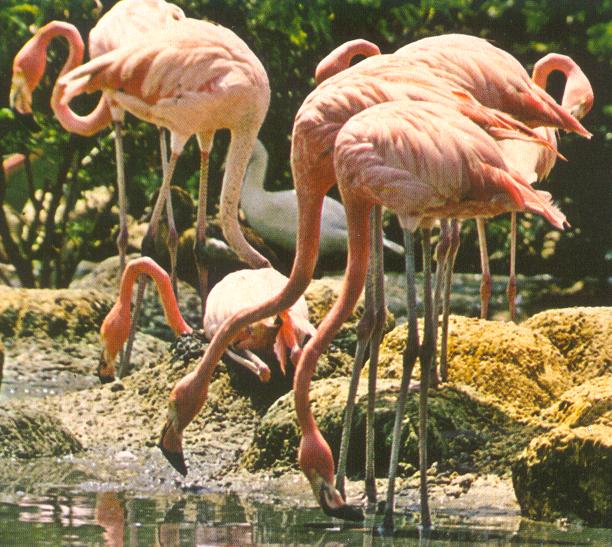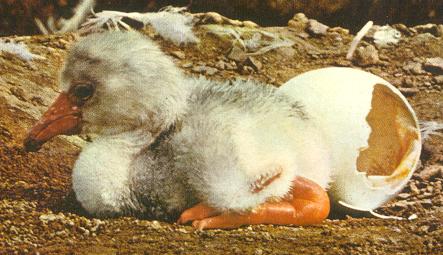
Phoenicopterus ruber

Have a look at that pecliar bill. That's the flamingo's feeding mechanism. They actually feed on nearly microscopic shrimp in the shallows. They'll scoop up a mouthful of water, then shake their heads from side to side. The water flows out between their thosands of tiny, tiny teeth, leaving them with half a mouthful of shrimp. It's a special natural dye in the shrimps' shells which gives the flamingo its special pink coloration. In fact, zoos have to import those shrimps to the flamingo enclosures, or the birds' feathers will lose their pinkness and become white.
 Notice how odd the adaptation is. They've got really long legs, which lifts them high above the water, but then they need that really long neck to get back down to water level to feed. It's pretty bizarre. As nearly as I can figure, this is so they can keep their vitals away from danger while down at the water's edge.
Notice how odd the adaptation is. They've got really long legs, which lifts them high above the water, but then they need that really long neck to get back down to water level to feed. It's pretty bizarre. As nearly as I can figure, this is so they can keep their vitals away from danger while down at the water's edge.
Baby flamingos are born looking very different from their parents. First of all, they're grayish in color. Secondly, their bills are straight, not a scoop like their parents'. And third, they've got stubby little legs! Not to worry, though. They eventually grow into the tall, lovely, pink birds zoo-goers are used to.
Flamingos live mainly elsewhere, along the coastlines of southern South America, across central and southern Africa, and throughout southern Europe and the Middle East. Here in North America, they live in a pretty local area around Florida. Nevertheless, they're a pretty solid symbol of this mighty continent.